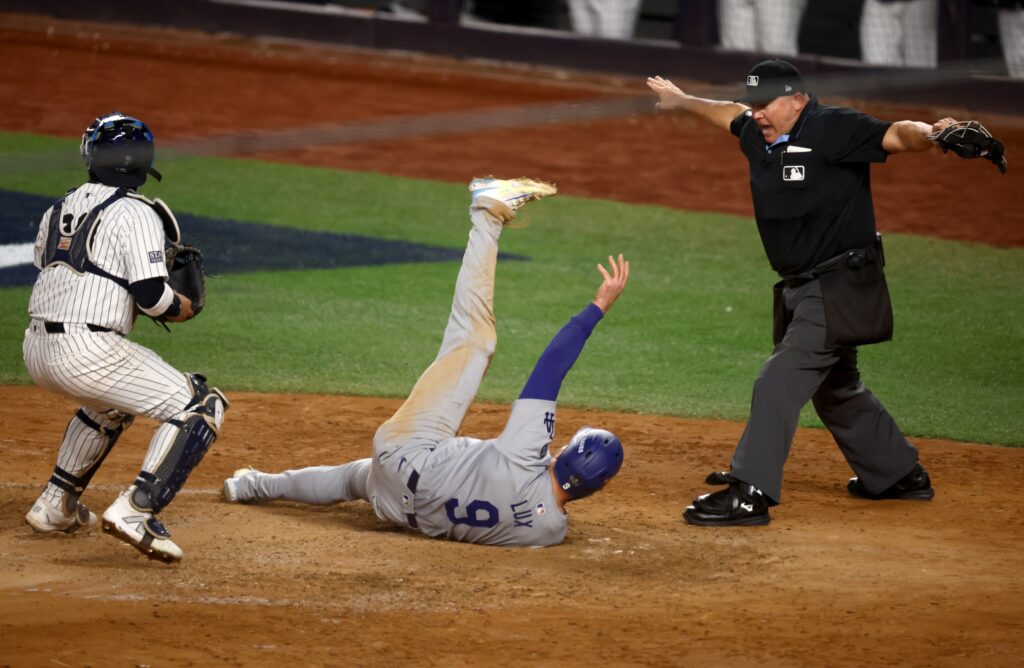Baseball, often celebrated as America’s pastime, is a sport steeped in tradition and precision. Yet, despite technological advancements, umpire calls remain a significant element of the game—sometimes sparking heated debates among players, fans, and analysts. Much like the decision-making intensity seen in cricket bet live scenarios, controversial umpire decisions have shaped the outcomes of countless MLB games, showcasing the human factor’s undeniable impact on the sport.
MLB’s Most Controversial Umpire Calls: How Human Factors Affect Game Outcomes
The Role of Umpires in MLB
Umpires play a critical role in MLB by interpreting and enforcing the game’s rules. They are responsible for ensuring fair play and maintaining the integrity of every match. This involves making split-second judgments on various scenarios, such as balls and strikes, safe or out calls, fair or foul balls and plays at the plate. Their decisions often dictate the pace and flow of the game, making their role both pivotal and highly scrutinized.
One of the most challenging aspects of umpiring is consistency, particularly when calling balls and strikes. The strike zone, while defined by the MLB rulebook, often varies slightly depending on them. This subjectivity has long been a topic of debate, as it can influence the strategies employed by pitchers and hitters alike.
Additionally, they are tasked with handling disputes on the field. Whether it’s calming tensions during a heated argument or ejecting players and managers for unsportsmanlike behavior, they must exercise authority while maintaining professionalism. This requires not only a deep understanding of the game but also strong communication and conflict-resolution skills.
In the era of advanced analytics and technology, the role of umpires has evolved. Tools like instant replay and pitch-tracking systems provide a safety net for reviewing questionable calls, but they also place umpires under increased scrutiny. Despite these advancements, the human element remains integral to the game, as umpires’ judgment and instincts add a layer of unpredictability that technology cannot replicate.
Memorable Controversial Calls in MLB History
- The “Imperfect Game” (2010): Detroit Tigers pitcher Armando Galarraga’s near-perfect game was upended by a missed call at first base. Umpire Jim Joyce later admitted his mistake, highlighting the fallibility of human judgment.
- The Pine Tar Incident (1983): Kansas City Royals George Brett was ruled out after a home run due to excessive pine tar on his bat. The call was later overturned, but the incident remains one of MLB’s most dramatic moments.
- The Infield Fly Rule Controversy (2012): During the National League Wild Card Game, an infield fly rule call sparked confusion and anger among fans and players, influencing the game’s outcome.
Human Error vs. Technology
The advent of instant replay and electronic strike zones aims to reduce errors in MLB. However, these technologies have sparked their debates. Critics argue that over-reliance on technology detracts from the human element that makes baseball unique. Proponents, on the other hand, emphasize the importance of accuracy in a sport where every play matters.
The Psychological Pressure on Umpires
Umpires face immense pressure to make split-second decisions while balancing the expectations of players, coaches, and fans. The roar of a passionate crowd can amplify this pressure, as their reactions often hinge on the outcome of a single call. In high-stakes games, especially during the postseason, the weight of such decisions becomes even more pronounced, with millions of viewers scrutinizing their every move.
Fatigue is another critical factor. Umpires often work long games under physically demanding conditions, which can affect their concentration and decision-making. Unlike players who rotate positions or get substituted, umpires remain active for the entire game, requiring sustained focus for hours.
Psychological resilience is a key attribute for umpires. They must handle intense criticism from players, managers, and fans, often in real time. The ability to remain composed and confident in their calls, despite external pressures, is essential. To support this, MLB provides training programs that emphasize mental toughness and stress management techniques, helping umpires cope with the demands of the job.
Moreover, social media has added a new dimension to the pressure umpires face. Mistakes that might have been forgotten in the past are now replayed, analyzed, and debated across digital platforms, exposing umpires to widespread public scrutiny. This can lead to anxiety and self-doubt, further complicating their role on the field.
Despite these challenges, many umpires rise to the occasion, demonstrating remarkable dedication and professionalism. Their ability to manage the game’s nuances while maintaining fairness and integrity under such conditions underscores the vital role they play in MLB.
Balancing Tradition and Accuracy
MLB continues to grapple with the balance between preserving the traditional role of umpires and embracing technological advancements. While tools like instant replay provide a safety net for critical decisions, they also challenge the spontaneity and rhythm of the game.
Conclusion
Controversial umpire calls are a reminder of the human factor’s enduring presence in MLB. These moments, while sometimes polarizing, contribute to the drama and unpredictability that make baseball captivating. As MLB navigates the intersection of tradition and innovation, the debate over umpire calls will undoubtedly remain a defining feature of the sport.
Main Image: © Vincent Carchietta-Imagn Images



